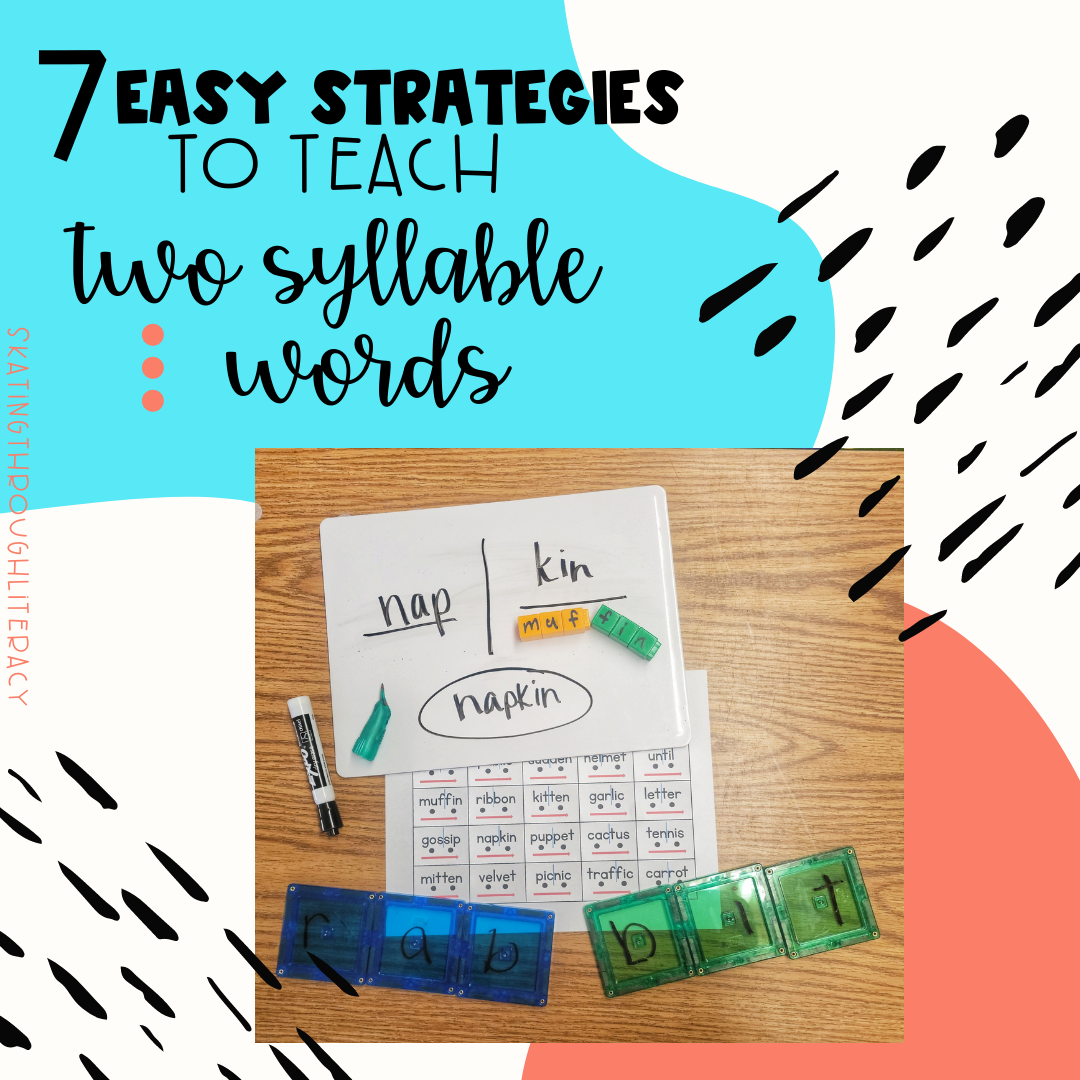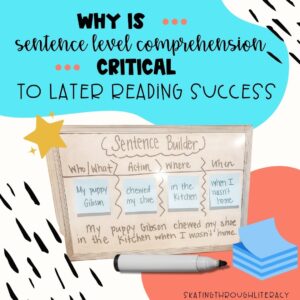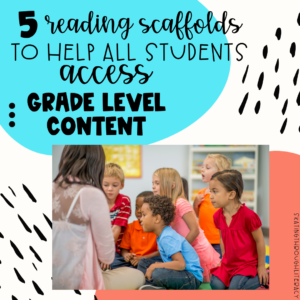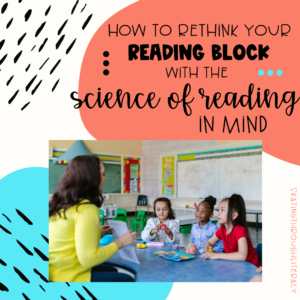It’s one of my favorite things as a classroom reading teacher: A student is showing me they have mastered short and long vowels. They have a good sense of r-controlled vowels. They’ve got all their consonant sounds, blends, and digraphs. The sight words are clicking. And all signs are pointing towards two syllable words!
Resources, strategies, and the cutest centers seem abundant in lower elementary school. But as students hit these more advanced reading skills, the resources and information seem to dissipate. As a reading teacher, I felt confident in these first fundamental skills of literacy, but found myself faltering a little when it came to more complex word reading But over the last year, by trial and error, I’ve tried a bunch of strategies when approaching two syllable words and now I want to share them with you.
Quick background for those new around here. I am a full time classroom general education teacher. Our upper elementary is departmentalized therefore I teach only reading for the whole third grade. There are 3 sets of 29 students I see everyday! As I continued along in my career, I was becoming frustrated and perplexed by students I just couldn’t seem to reach as readers. Why were they not making the progress I felt like they could make? Long story short, this frustrated led me down a path of education and discovery as I entered the world of the science of reading. After that, my passion for science based reading instruction has exploded from there. Now it is my passion to help bring this information to teachers like myself who are craving the knowledge to help their students develop the gift of literacy.
Check out my free workbook 7 Ways to Revamp your Phonics Instruction Starting Tomorrow for more information.
Two Syllable Words
Instruction of two syllable words begins with the basic understanding of what makes a syllable a syllable. A syllable is a unit of sound that is based around one syllable. Every syllable must have a vowel. This is the first step I teach all my students when looking at words, which carries into our very first lesson of two syllable words.
A common misconception that I grew up believing is that English makes no sense. But I’ve come to discover through all the training that reading is very much a language that follows general patterns and a code. A student being able to read this code and to recognize familiar syllable patterns in unknown words is one of the keys to helping them develop into fluent and proficient readers.
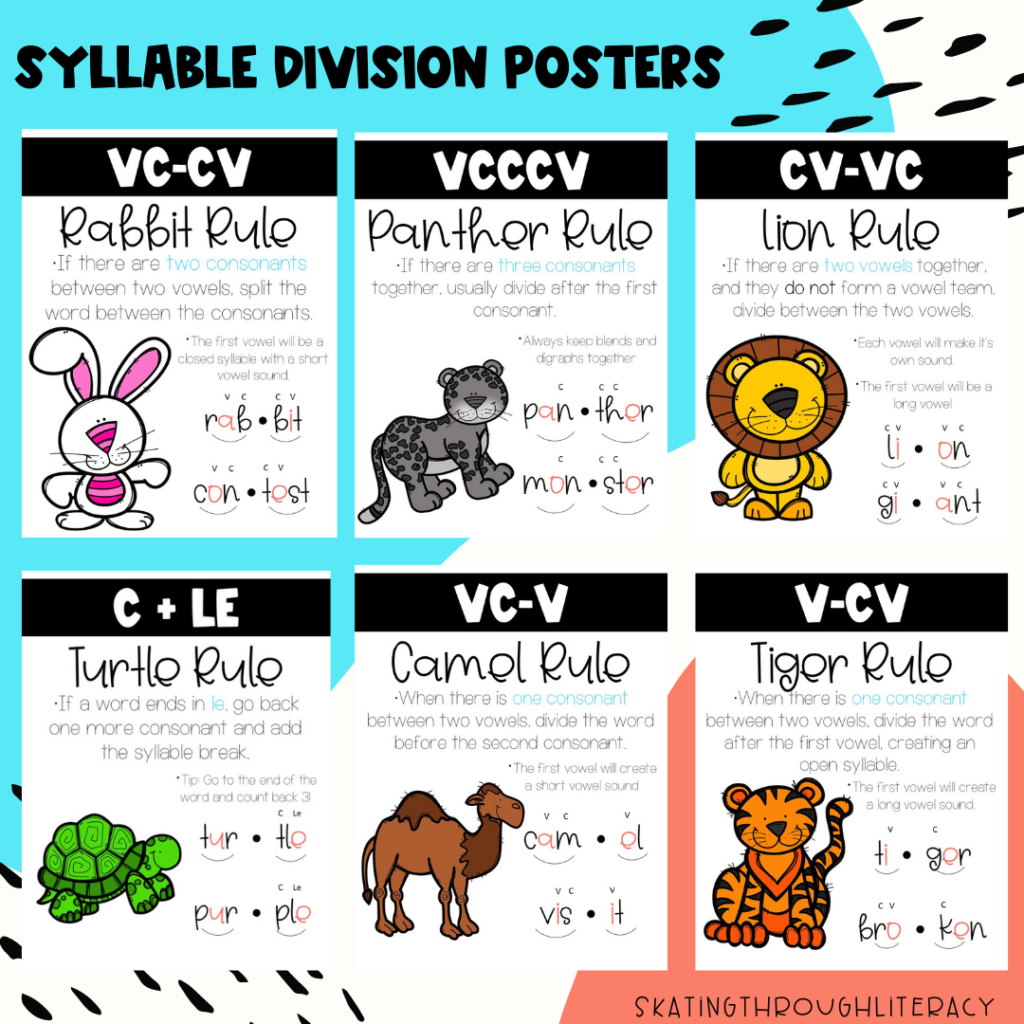
There are 6 common syllable types in our language and a few odd syllables that do not fit nicely into a category. If you are interested in learning more about those specific syllable types check out my blog post: Why Do You Need To Teach Syllable Types.
How to Teach Two Syllable Words
Understanding what the syllable types are verses understanding how to actually teach two syllable words was a completely different thing for me. I understood the syllable types long before I had actual strategies that could work for kids struggling with this concept. While working with my students in whole group and small group some favorite effective strategies began to emerge and stick more so than others.
Any time multisensory input can be added to a strategy, the more effective I believe it comes. By using some different tools around the classroom, I was able to help students visual, manipulate, and understand the two syllable words. Here are seven of my student’s favorite hands on strategies.
1. Unifix Cubes
Unifix cubes were one of the first manipulatives I grabbed simply because of the sheer number I tend to have laying around the classroom. Much to my pleasant surprise, they are also easy to write on with expo markers. Students can use two different color cubes to represent the two syllables. Furthermore, each individual cube can be used to represent each sound within the syllable. Students can practice segmenting out each sound within a syllable before putting the word all together.
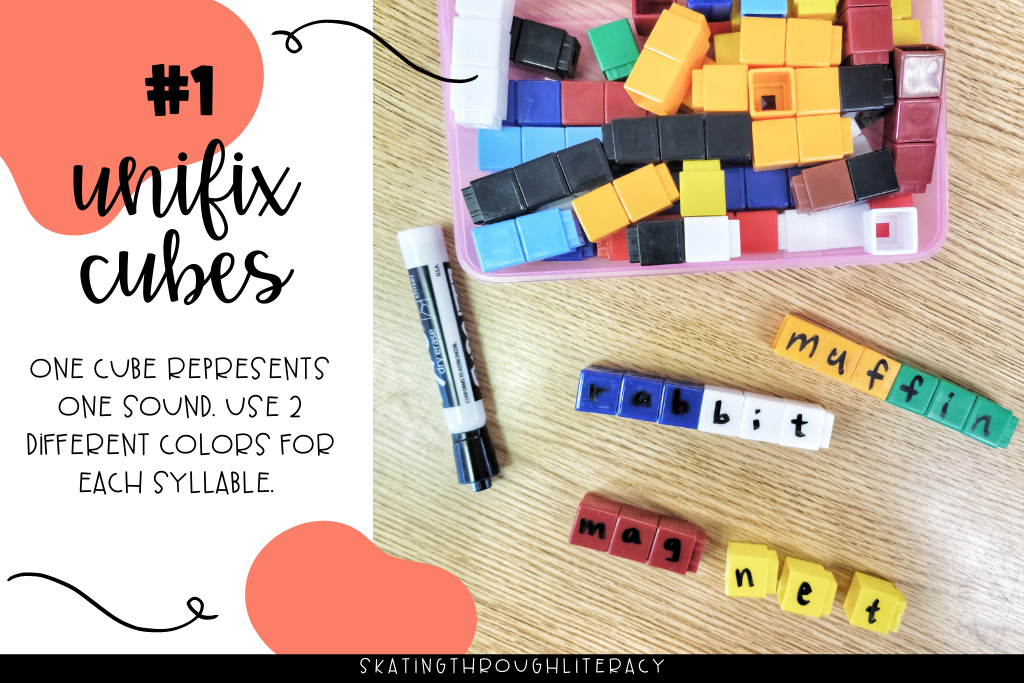
2. Magnet Tiles
These popular building blocks were sitting in a morning choice bins when I saw a teacher online use these for sounds. Immediately I knew they would be perfect for two syllable words. Much like the unifix cubes, the magnet tiles can be used with two different colors for the two syllables. Consequently, each magnet tile can further segment each sound within it.
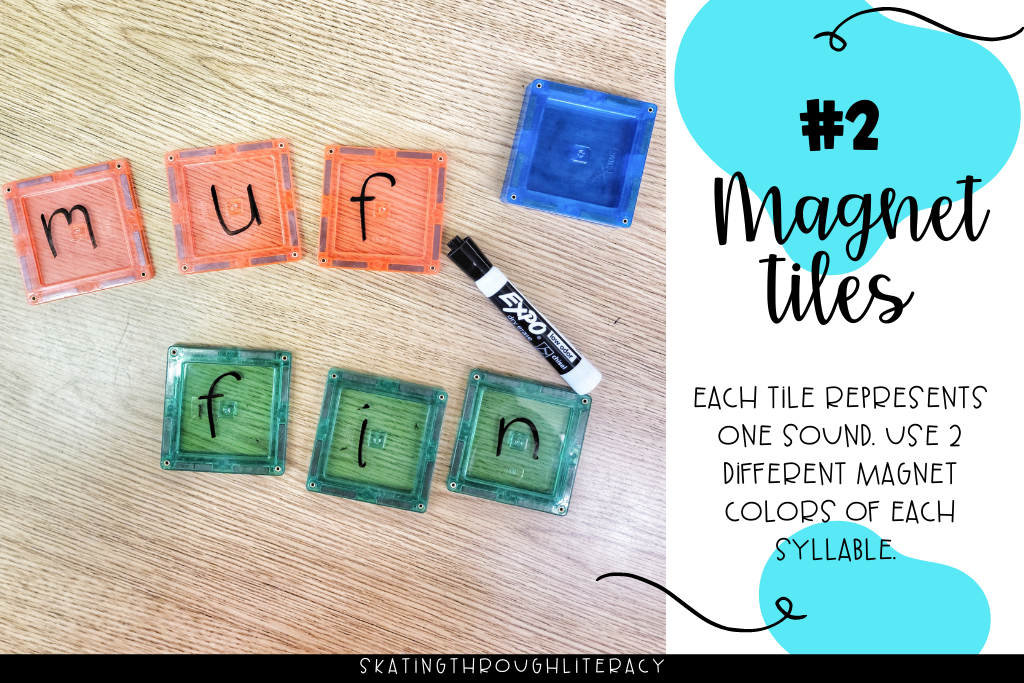
3. Syllable Match Ups
This idea is super simple but so effective! I also love that you can do it for any type of two syllable word. Simply write each syllable on a part. Mix up all the pieces and give each student the bag of syllables. Students will need to match up each piece to make a new real two syllable word. My favorite way to use match up cards is to have students waiting to start reading group with me work on these match ups while I get the class settled into their independent work. They are always engaged, focused, and ready to share their two syllable words with me when I get to the table. You can use any sticky notes or notecards you have available.
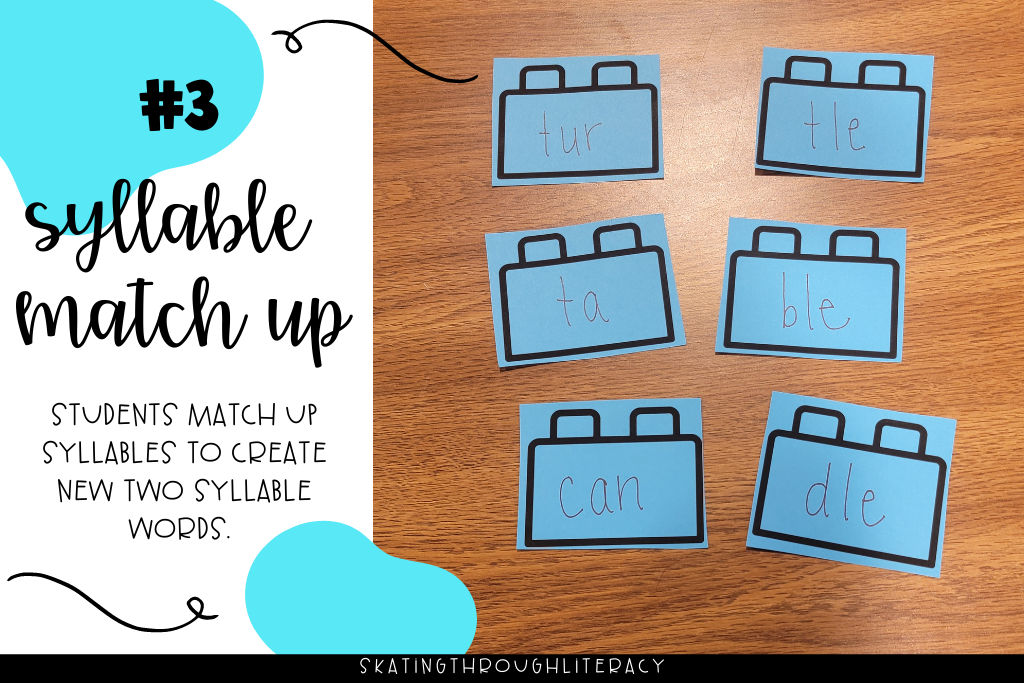
IMSE is always putting out great free resources from educators. Check out the great freebies monthly for your small groups.
4. Mystery Word
We start playing mystery word at the very beginning of the year with one syllable words using individual sounds. When we move to two syllable words our mystery word game moves to the advance version. Students simply draw two lines on their whiteboards or paper. The teacher reads each syllable slowly with a dramatic pause. Student writes the first syllable on line one. Next, the second syllable on line two. When they know the mystery word they put it in a circle either at the end of the paper or on a sticky note. This process helps students transfer the kinesthetic movement of pounding and tapping, to applying the graphemes that match.
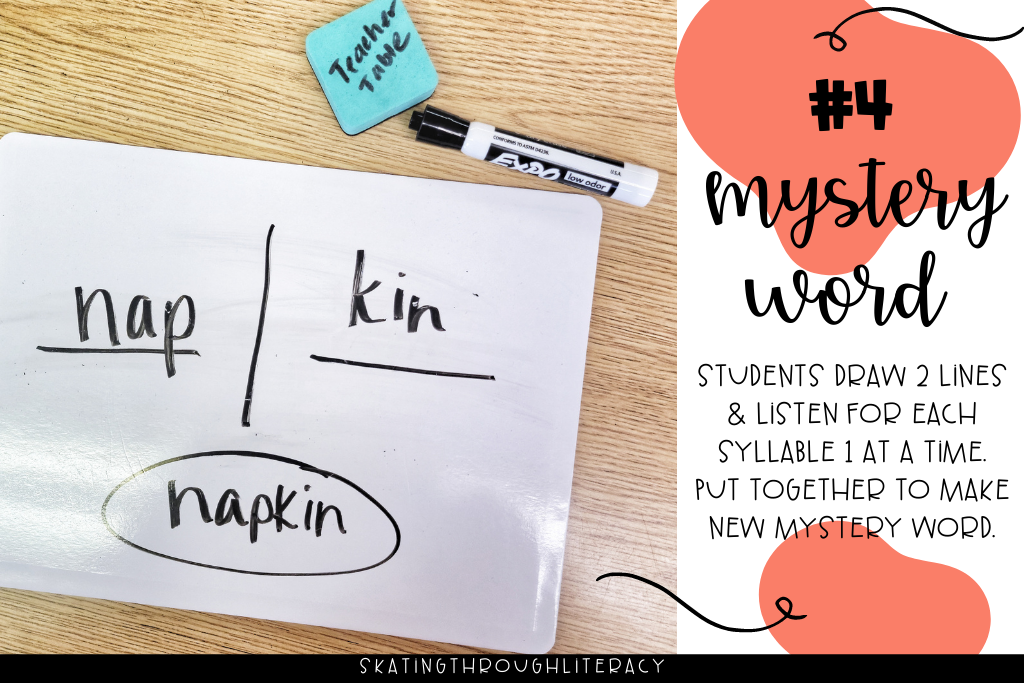
5. Coding Words
Coding words is a term that became almost famous in our classroom completely by chance. My students started calling this exercise coding words and fell in love with the process. Have students copy a two syllable word on their own personal white board. Students then code the word marking the vowels, number of consonants in-between the vowels, and inserting a syllable break. From there students can code each vowel for the sound it makes as well as label the syllable types as CL- closed, O- open, C+le, Ce, and CL+r. Working this in-depth with words skyrocketed my students to a new deep understanding of words and how they work.
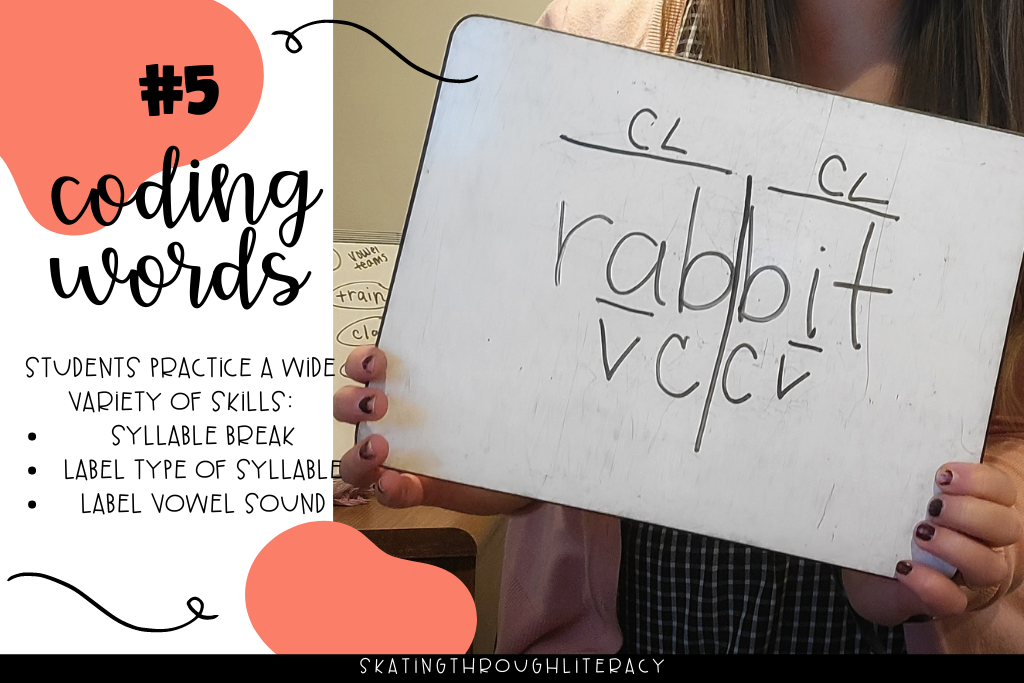
6. Segmenting Boards with Witch Fingers
Segmenting and blending boards have become a quick go to resource for my reading groups lately. Students use their witch finger to swoop each individual syllable before pushing the word all the way through with the blending arrow. These boards help to develop fluency and automaticity with two syllable word reading.
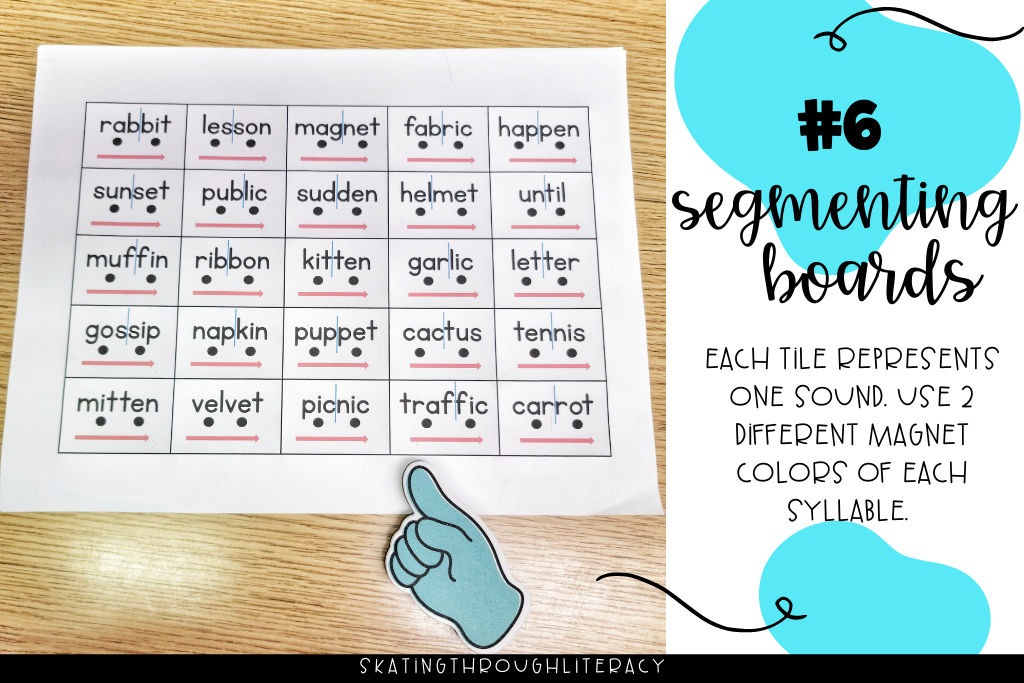
You can grab your own segmenting and blending boards in my tpt store.
7. Digital Word Work
I love using digital resources to engage my students. Digital word work has become a staple in our classroom to practice all things syllable related. I love the versatile nature of digital products. In these resources, which you can check out in my tpt store, students work through a variety of activities with two syllable words increasing their automaticity and overall understanding.
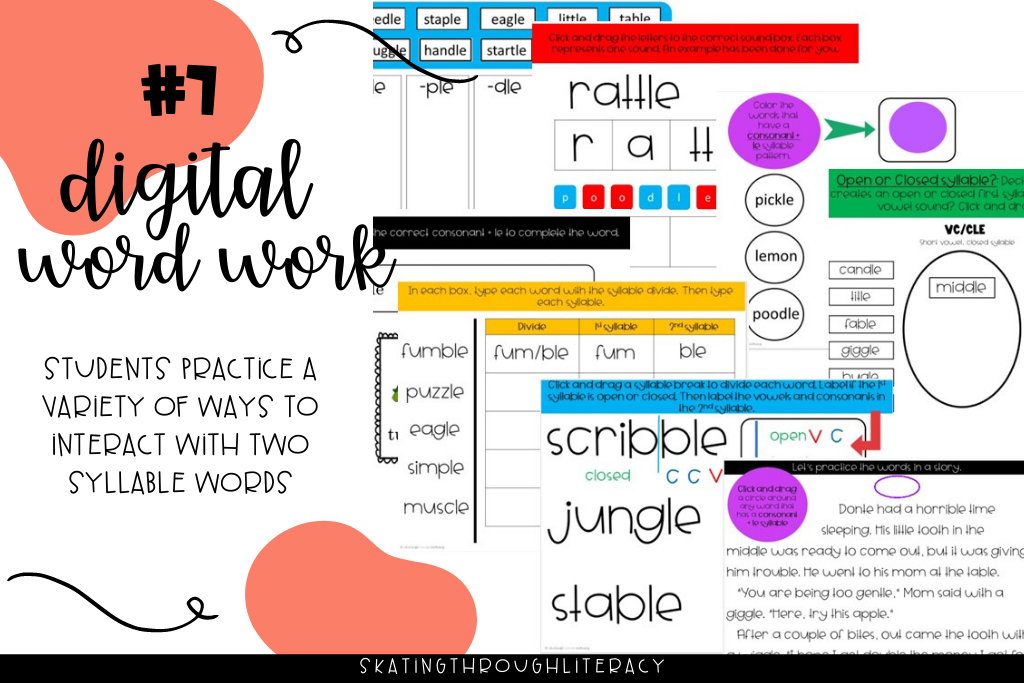
There are many more strategies for teaching two syllable words but these seven are the ones I continue to come back to again and again when working with students. Pick one to try with your kids tomorrow. Don’t forget to come by and share with me how it went!

